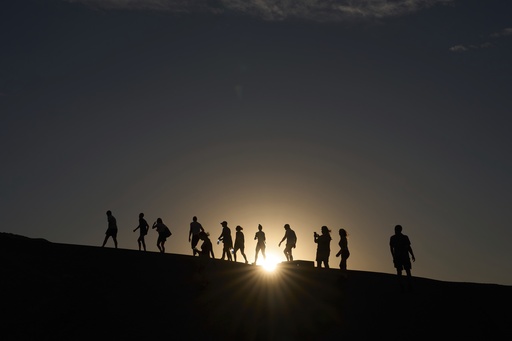
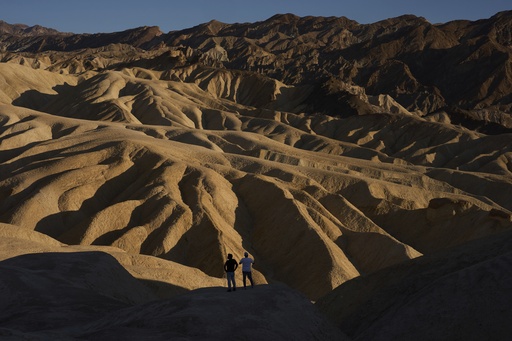
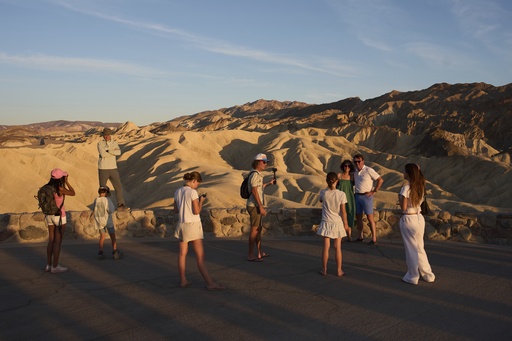
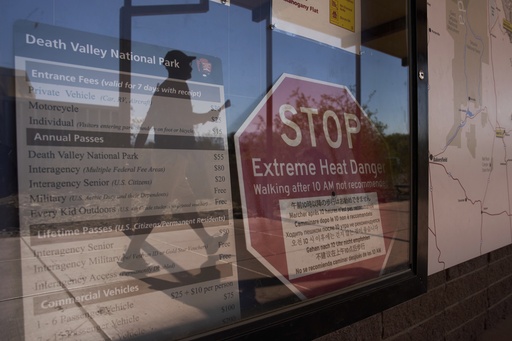
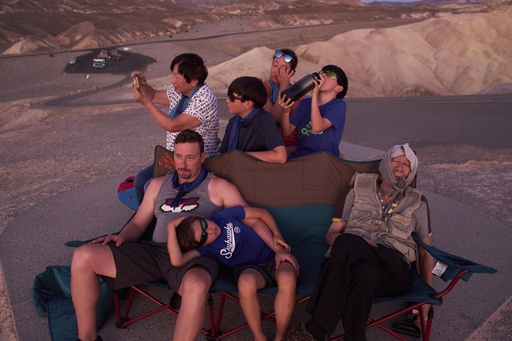
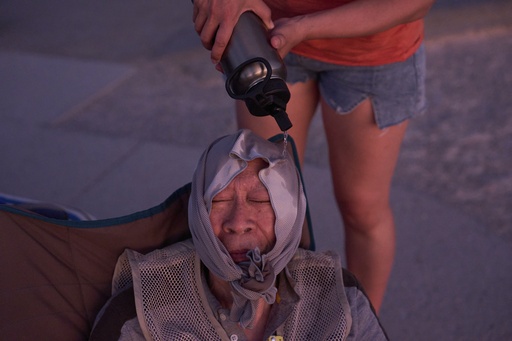
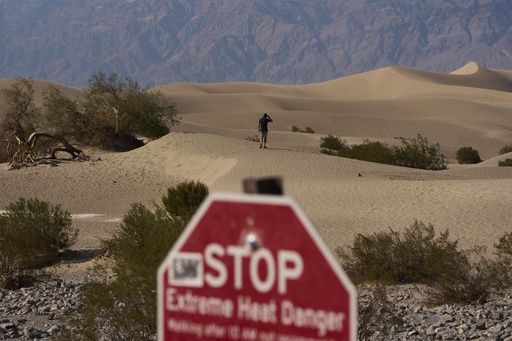
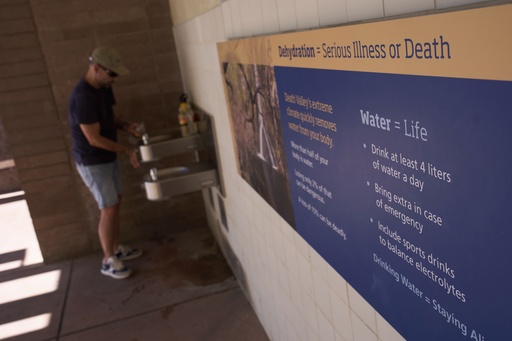
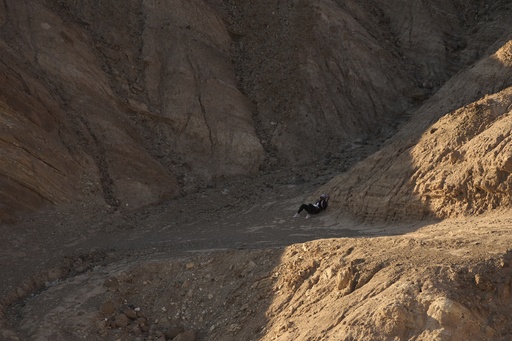
DEATH VALLEY NATIONAL PARK, Calif. (AP) — Ray Estrada's 11-year-old grandson is used to Las Vegas' scorching summers, but he'd always wanted to experience the heat in one of the Earth's hottest places. So Estrada recently drove him to Death Valley National Park, with an umbrella, extra water and electrolytes in tow. That day, the thermometer soared to 118 F (47.78 C).
“We have to be very careful when we go out there,” Estrada told him. “If you start feeling dizzy or whatever... we’re just gonna turn back and be safe so we can do this again another time.”
The extreme temperatures in this stretch of California desert attract visitors every year, some determined to finish a grueling, multiday race, others just curious about the sizzling heat and the landscape's vast beauty. Yet despite the warnings, the heat kills one to three people annually, and park rangers respond to overheated visitors multiple times per week, making communication about heat safety a priority for the National Park Service.
But that's easier said than done.
“It’s very easy to underestimate how dangerous heat is," said Abby Wines, the park's acting deputy superintendent. “People are usually used to thinking of heat as something that makes them uncomfortable," and that they can tough it out.
“This type of heat will kill,” she said.
Death Valley holds the record for the hottest temperature ever officially recorded — 134 F (56.67 C) in July 1913 — although some experts have disputed it and say the real record was 130 F (54.4 C) there in July 2021.
In the U.S., heat kills more people than other weather events combined, according to the National Oceanic and Atmospheric Administration. If planet-warming greenhouse gas emissions, which come from burning fuels like oil and coal, continue at their current pace, more places could experience broiling temperatures. That makes it crucial to communicate the dangers of extreme heat and safety precautions, as both can influence who lives and dies.
Throughout this desert are stark warnings of the deadly heat: “Stop. Extreme heat danger. Walking after 10 a.m. not recommended,” one sign says. “HEAT KILLS!” warns another. On bathroom walls there are reminders to hydrate in the form of charts displaying the color of pee — the darker the urine, the more you need to drink water.
Another sign warns visitors that helicopters for medical emergencies can’t safely fly amid extreme temperatures. Ambulances can often deploy in extreme heat but are not a guarantee. The safety of emergency responders is always considered.
Baruch Fischhoff, professor at Carnegie Mellon University who studies decision-making, said evidence shows that people generally underestimate risk when they have a sense of control. Information that explicitly says rescue might not be an option if it’s too hot “takes away that sense of the control that can lead to underestimating risk.”
Failing to recognize those risks can be deadly. Last summer, a helicopter was unable to fly to a rescue because of 128 F (53.33 C) temperatures. A group of visitors were traveling on motorcycles when one died from the heat, and another was treated for severe heat illness and transported to a hospital.
Rescue options are even more limited for hikers lost on a trail. Unless it’s a short distance and rescuers know where the person is, they’ll likely wait until sunset if it’s above 115 F (46.11 C). “Depending on their situation,” Wines said, that's “probably too late.”
Two of the park's busiest months are in the summer, and it sees a small bump in visitors when temperatures are expected to hit the high 120s or 130s F (48.89s to 54.44s C). But it's the moderate temperatures that tend to get people into more trouble.
“We actually have a harder time communicating our concerns about heat to the public when they visit and it’s only 100 to 115," Wines said. The dryness evaporates sweat almost instantly, so many people don't realize how much they're actually sweating.
Then there's the vastness. Death Valley has more than 50 entrances, so many visitors aren't seeing rangers who can relay important information. Instead, they place heat warning signs in the hottest and most popular spots. But they discovered that people responded less to heat warning signs that looked permanent compared to those that seemed temporary.
For Marc Green, an expert in experimental psychology, that finding is “100% predictable.”
“People judge what to do based on specific information,” he said. If a warning sign is up all the time, even when conditions are good, it contains no useful information. “That's why people disregard it.”
Jennifer Marlon, senior research scientist at the Yale School of the Environment, has studied public perceptions of the health risks of extreme heat across the U.S. How people perceive heat and other climate risks varies by factors like age, race, gender, income level and where they live. Older white men, for instance, tend to have lower risk perceptions across the board, whereas women have higher risk perceptions than men.
“The challenge, though, is that the level of worry or risk perception doesn’t necessarily translate into action,” Marlon said. Optimism bias could also falsely make a person believe the heat won’t personally affect them. While studies show that experience with heat increases people’s concern, it is short-lived.
“You get a bump for like a year or so after a really big event and then it just goes right back to the baseline,” she said.
Marlon said to be specific. Don't just tell people that heat can be lethal, tell them what could happen to their bodies and what to do to stay safe.
Death Valley park does this. On site and online, park officials tell visitors to avoid hiking at low elevations after 10 a.m., to stay on paved roads and near their cars. They say to drink and carry plenty of water, and to seek shade and hydrate if you feel dizzy, nauseous or have a headache.
And while this isn't something the park would initiate, if scientists gave names to heat waves, similar to how hurricanes are named, that could better grab people’s attention because human brains are attuned to novelty, Marlon said.
The messenger is also important. If friends, family and neighbors are worried and nudging you to do something, that can be more powerful than reading information online. Community leaders modeling appropriate behavior — like saying they’re evacuating their family ahead of a hurricane or that they carry extra water in their trunk — can also go a long way.
Marlon also suggested communicating how extreme heat can impair the ability to think clearly. When communicating with images, show people drinking water, putting on cold wet towels or resting in shade.
“Whatever the recommended behavior is, show them pictures of that behavior because we’re incredibly and fundamentally social animals, and body language is so much of how we communicate,” Marlon said.
———
Associated Press photographer John Locher contributed to this report from Death Valley National Park.
———
The Associated Press receives support from the Walton Family Foundation for coverage of water and environmental policy. The AP is solely responsible for all content. For all of AP’s environmental coverage, visit https://apnews.com/hub/climate-and-environment.

 Associated Press Top News
Associated Press Top News
 Daily Voice
Daily Voice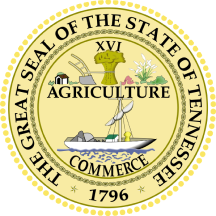 Local News in Tennessee
Local News in Tennessee Blaze Media
Blaze Media FOX 29 Entertainment
FOX 29 Entertainment KKTV 11 News
KKTV 11 News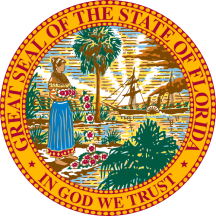 Local News in Florida
Local News in Florida Raw Story
Raw Story Associated Press US and World News Video
Associated Press US and World News Video The Babylon Bee
The Babylon Bee AlterNet
AlterNet Glam
Glam